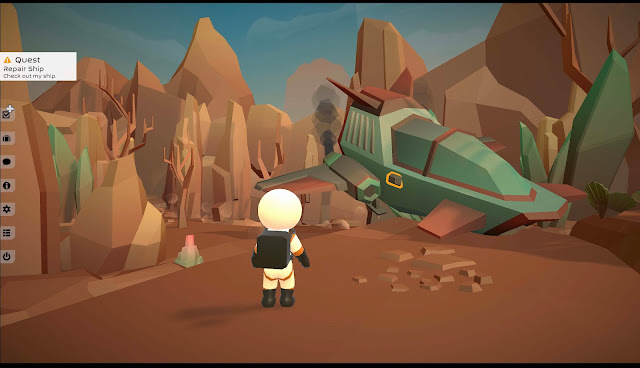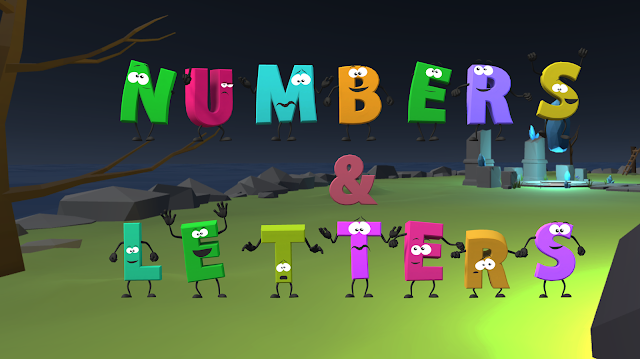The Serious
Games Showcase & Challenge (SGS&C) has
announced the finalists in the various award categories for 2022.
As
anticipated, the awards structure has been updated and is now based on the
target audience for the game submitted (General or Government Audience), not the
submitting organization.
An esteemed
panel of evaluators from around the globe are now reviewing the finalists and
will determine the winners. For the 2022 challenge the SGS&C will award
games for Best General Audience, Best Government Audience, Innovation, People’s
Choice, Best Student-Developed Game, Best XR (VR/AR/MR), and Students’ Choice.
HERE ARE THIS YEAR'S GENERAL AUDIENCE FINALISTS:
RoboCo by Filament Games
Subject: Robotics
RoboCo is a Serious Game
about designing and building robots to serve the needs of hapless humans in the
world of tomorrow.
The uniqueness of RoboCo approach can be experienced through the combination of a robot-building sandbox mode and a campaign mode where players build specific robots to take on open-ended challenges. Players also have the option to use the Python language to automate their creations and let their robots conquer the challenges.
STROKE-Keep the Brain
Alive in 45 by Veterans Health Administration
Subject: Acute Ischemic Stroke
STROKE-Keep the Brain Alive in 45 is a Serious Games to diagnose and treat virtual avatar
patients with acute ischemic stroke (AIS) using the VA stroke protocol. Game
goal is to save the brain of a stroke victim in 45 minutes or less.
In Level one, the player will observe virtual patients display multiple physical symptoms and try to determine if the patient is 1. having a stroke and 2. which of the seven symptoms is the avatar patient displaying. Level two is role based where the player chooses doctor or nurse who is on the clock to save the brain of a stroke victim. The mentor brain gives the player immediate positive or negative feedback on their clinical decisions while the scoring system of a live brain will deteriorate and die over time if the player cannot save the brain in 45 minutes or less.
Subject: Dermatology
Top Derm is a medically accurate, fun, and challenging experience for dermatologist- and it's free and available on your phone.
Top Derm consists of short, rapid-fire, focused challenge packs, designed to give players a variety of well-rounded dermatology challenges that strengthen both the players’ derm knowledge and their ability to visually identify common and rare skin disorders.
In addition to challenge packs, Top Derm includes certified CME packs on popular topics such as acne, melanoma, and dermatitis for free anytime, anywhere. Level Ex has harnessed the most cutting-edge visual effects and video game technology to create its dermatologist-approved, groundbreaking DeepSkinFX™ Generator, which allows us to create mind-blowing, medically accurate, high-resolution imagery of any skin disorder on any region of the body and any skin tone—giving players the opportunity to visually experience a wide variety of derm scenarios.
HoloBrand by University of
Applied Science Trier
Subject: Product
Market Placement
HoloBrand is a collocated Serious Game for the HoloLens and Meta Quest 2, covering Urban’s preceptor model of product market placement (Glen L. Urban: Preceptor: A Model for Product Positioning, 1975).
Players should get an intuitive understanding of consumer mass market mechanics. Collocated means a multiplayer game taking place in the same physical space. Collocated AR Games combine the advantages of a board game with a computer game. As in a board game, discussing game aspects with people in the same physical space is possible.
As in a computer game, you have
the advantages of automated simulation and the possibility to display private
information as not every player needs to see the same situation. HoloBrand
distinguishes between a master and three players. The master is the mentor in
the situation that steers the mission progress and can explain additional
information on the included slides. HoloBrand
is a joint development between the computer science department and the
economics department of the University of Applied Science Trier.
ARIN-561 by USC Institute
for Creative Technologies
Subject: Artificial
Intelligence & Math
ARIN-561 is a 3D role-playing game built on Unity, a cross-platform game engine developed by Unity Technologies. In the game, students play as a space-faring scientist who crash landed on an alien planet named ARIN-561. In order to safely return home, the scientist begin exploring the planet to gather resources needed to repair the broken ship while uncovering the mystery of the planet.
The activities for survival and for exploration form the basis for the tasks the students carry out in the game, with challenges such as searching for missing spaceship parts or cracking passwords serving as natural opportunities for the introduction of search as a topic.
The current implementation of the game covers three classical
search algorithms: breadth-first search, depth-first search, and greedy search.
Poconostics by BlueHalo
Subject: Physical
Rehabilitation
Poconostics consists of two games for balance training. Tilted dungeon requires the player to sway their body to navigate a character through a maze. Food Frenzy requires the player to use their head and eyes to target flying food elements and shoot them from the air.
These games
use body-pose and head/eye tracking to give patients engaging ways to complete
therapy exercises and provide therapists with objective data about patients’
performance.
PreSore: 3D Pressure
Injury Prevention by Simofun & Koç Universty
Subject: Pressure
Injury Prevention
PreSore was designed to educate the patients’ relatives and the
community on the prevention of pressure injuries, formerly named pressure sores.
In the game, the player is expected to make quick and accurate attempts to
prevent pressure injury in the virtual patient receiving home care.
GENERAL AUDIENCE: STUDENT-DEVELOPED GAMES
Pirates of the Sea++ by
Norfolk State University
Subject: Computer Science Concepts
Pirates of the Sea++ was designed to create a fun and engaging 2D learning game for the player to successfully enhance their knowledge of C++ computer programming concepts, specifically basic output structure, C++ basic data types, conditional operators, and conditional statements such as if statements and while loops.
Subject: Numeracy and literacy
skills
Medical Imaging VR by Ulster University & Fresno State University
Subject: Imaging/human physiology











